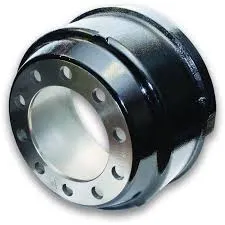
-
 Afrikaans
Afrikaans -
 Albanian
Albanian -
 Amharic
Amharic -
 Arabic
Arabic -
 Armenian
Armenian -
 Azerbaijani
Azerbaijani -
 Basque
Basque -
 Belarusian
Belarusian -
 Bengali
Bengali -
 Bosnian
Bosnian -
 Bulgarian
Bulgarian -
 Catalan
Catalan -
 Cebuano
Cebuano -
 Corsican
Corsican -
 Croatian
Croatian -
 Czech
Czech -
 Danish
Danish -
 Dutch
Dutch -
 Lus Askiv
Lus Askiv -
 Esperanto
Esperanto -
 Estonian
Estonian -
 Finnish
Finnish -
 French
French -
 Frisian
Frisian -
 Galician
Galician -
 Georgian
Georgian -
 German
German -
 Greek
Greek -
 Gujarati
Gujarati -
 Haitian Creole
Haitian Creole -
 hausa
hausa -
 hawaiian
hawaiian -
 Hebrew
Hebrew -
 Hindi
Hindi -
 Miao
Miao -
 Hungarian
Hungarian -
 Icelandic
Icelandic -
 igbo
igbo -
 Indonesian
Indonesian -
 irish
irish -
 Italian
Italian -
 Japanese
Japanese -
 Javanese
Javanese -
 Kannada
Kannada -
 kazakh
kazakh -
 Khmer
Khmer -
 Rwandese
Rwandese -
 Korean
Korean -
 Kurdish
Kurdish -
 Kyrgyz
Kyrgyz -
 Lao
Lao -
 Latin
Latin -
 Latvian
Latvian -
 Lithuanian
Lithuanian -
 Luxembourgish
Luxembourgish -
 Macedonian
Macedonian -
 Malgashi
Malgashi -
 Malay
Malay -
 Malayalam
Malayalam -
 Maltese
Maltese -
 Maori
Maori -
 Marathi
Marathi -
 Mongolian
Mongolian -
 Myanmar
Myanmar -
 Nepali
Nepali -
 Norwegian
Norwegian -
 Norwegian
Norwegian -
 Occitan
Occitan -
 Pashto
Pashto -
 Persian
Persian -
 Polish
Polish -
 Portuguese
Portuguese -
 Punjabi
Punjabi -
 Romanian
Romanian -
 Russian
Russian -
 Samoan
Samoan -
 Scottish Gaelic
Scottish Gaelic -
 Serbian
Serbian -
 Sesotho
Sesotho -
 Shona
Shona -
 Sindhi
Sindhi -
 Sinhala
Sinhala -
 Slovak
Slovak -
 Slovenian
Slovenian -
 Somali
Somali -
 Spanish
Spanish -
 Sundanese
Sundanese -
 Swahili
Swahili -
 Swedish
Swedish -
 Tagalog
Tagalog -
 Tajik
Tajik -
 Tamil
Tamil -
 Tatar
Tatar -
 Telugu
Telugu -
 Thai
Thai -
 Turkish
Turkish -
 Turkmen
Turkmen -
 Ukrainian
Ukrainian -
 Urdu
Urdu -
 Uighur
Uighur -
 Uzbek
Uzbek -
 Vietnamese
Vietnamese -
 Welsh
Welsh -
 Bantu
Bantu -
 Yiddish
Yiddish -
 Yoruba
Yoruba -
 Zulu
Zulu
Feb . 13, 2025 15:53
Rov qab mus rau npe
drum brake shoes minimum thickness
Understanding the critical importance of maintaining the minimum thickness of drum brake shoes is essential for vehicle safety and performance. The service life of drum brakes often depends on the condition of the brake shoes, critical components engineered to withstand intense pressure and provide reliable braking.
Furthermore, it is important to account for real-world driving conditions. Vehicles frequently driven in urban environments or in hilly terrain may experience accelerated wear on brake shoes due to frequent stopping. As such, more frequent inspections may be warranted, reinforcing the commitment to safety and reliable performance. Keeping a record of inspections and replacements can help in optimizing maintenance schedules and avoiding unexpected downtimes. Industry standards recommend regular inspections and maintenance of the brake system, ideally at each service interval. This routine check should include an assessment of the drum brake system as a whole, looking beyond just the brake shoes. Considering components such as the brake drum, return springs, and adjusters ensures a comprehensive approach to maintaining brake effectiveness. When replacing drum brake shoes, sourcing quality parts cannot be overstated. Trusted parts from reputable manufacturers provide known performance standards and longevity, enhancing the overall trustworthiness of the repair. Opting for cheaper alternatives may seem cost-effective in the short term, but they often compromise safety and require more frequent replacements. Ultimately, ensuring the drum brake shoes are above the minimum thickness required translates to enhanced vehicle safety and optimum performance. Regular maintenance and a proactive approach towards understanding and adhering to these specifications protect not only the vehicle but also its occupants. In doing so, you abide by the principles of reliability and safety, underscoring the value of expertise and diligence in automotive care.


Furthermore, it is important to account for real-world driving conditions. Vehicles frequently driven in urban environments or in hilly terrain may experience accelerated wear on brake shoes due to frequent stopping. As such, more frequent inspections may be warranted, reinforcing the commitment to safety and reliable performance. Keeping a record of inspections and replacements can help in optimizing maintenance schedules and avoiding unexpected downtimes. Industry standards recommend regular inspections and maintenance of the brake system, ideally at each service interval. This routine check should include an assessment of the drum brake system as a whole, looking beyond just the brake shoes. Considering components such as the brake drum, return springs, and adjusters ensures a comprehensive approach to maintaining brake effectiveness. When replacing drum brake shoes, sourcing quality parts cannot be overstated. Trusted parts from reputable manufacturers provide known performance standards and longevity, enhancing the overall trustworthiness of the repair. Opting for cheaper alternatives may seem cost-effective in the short term, but they often compromise safety and require more frequent replacements. Ultimately, ensuring the drum brake shoes are above the minimum thickness required translates to enhanced vehicle safety and optimum performance. Regular maintenance and a proactive approach towards understanding and adhering to these specifications protect not only the vehicle but also its occupants. In doing so, you abide by the principles of reliability and safety, underscoring the value of expertise and diligence in automotive care.
Ua ntej:
Tom ntej:
Xov xwm tshiab
-
Rear Drum Brakes Maintenance TipsXov xwmAug.04,2025
-
Key Components Affecting Brake Drum FunctionXov xwmAug.04,2025
-
Important Inspection for Truck Drum BrakeXov xwmAug.04,2025
-
How to Prepare for Changing Rear Drum BrakesXov xwmAug.04,2025
-
Essential Tools for Cleaning Drum Brakes ProperlyXov xwmAug.04,2025
-
Brake Drum Function GuideXov xwmAug.04,2025
-
Safety Features of Red Brake DrumsXov xwmAug.01,2025
